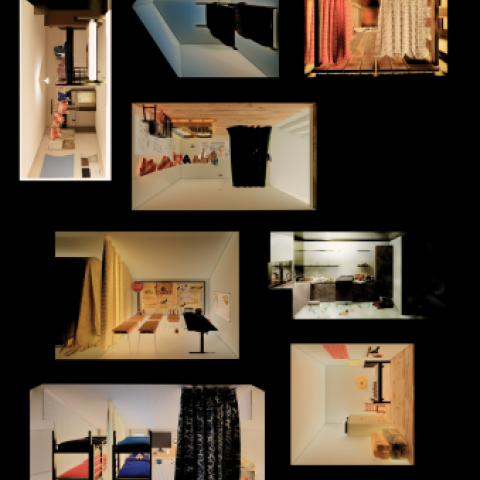P21 Gallery
21-27 Chalton Street
London
NW1 1JD
United Kingdom

Permanent Transience is an architectural tool for the communication of narratives on hold. The exhibition’s intervention focuses on the limbo period after fleeing a country and before resettlement.
European surveillance systems have prolonged the limbo periods between fleeing a country, and resettlement. As a consequence, “holding places” (with all their different typologies), have become the spaces containing lost and untold narratives that need to be nurtured, expressed, then exposed.
The structure and materiality of a “holding place” is not of question within this project - rather the exhibition focuses on the space of limbo in between home and the unknown, and what these holding places hold: the individual and their experiences.
For this project, artist Jumanah Bawazir worked with Somali women looking at the various holding places they had been occupying. “In the context of Somali women on their journeys to Europe, how do we create a process deployed in these transient moments, that builds a tool that communicates their narratives?”. Through conducting interviews, virtually reconstructing experiences, and using poetry together with the interviewees, the project aims to empower and humanize the interviewees whilst functioning as a holding to account to governments operating under the European surveillance systems that are inevitably controlling their journeys.
The film, ‘Permanent Transience’ - Narratives on Hold,’ focuses on one Somali woman’s specific journey illustrating how her narrative is one of 3.3 million in a state of limbo, addressing the government surveillance systems that have perpetuated these limbo periods, as a holding to account while also providing a platform for participants to reappropriate and take control of their own narratives.
About the Artist
Jumanah Bawazir is a multidisciplinary designer of mixed heritage studying at the Architectural Association. Her practice weaves together architecture, film and poetry in such a way as to confront systemic injustices around class, race and gender and their effects on BIPOC (black, indigenous, and people of color) narratives.
Jumanah’s work creates a bridge between “us and them” by providing a contemporary platform for marginalized backgrounds and identities to share their own accounts. Currently, her focus is on a long-term project that aims to project these narratives and challenge the architect’s role in generating change.
